Interview: The Building Blocks of an MTB Community
I'm sure we've all done it - ridden a trail without a care in the world about how long it took to build and who painstakingly crafted the earth and rock into something that provides us with endless joy. And you're forgiven for not thinking about it - when you're in the moment riding your bike, wondering who built that bit of trail is pretty low down on the agenda.
But that doesn't mean that it shouldn't be something that's totally ignored or glossed over. If you've ever taken a spade to dirt you'll instantly appreciate the amount of time and effort it takes to shift earth to make berms and jumps, how much energy is required to bench small sections of track into a hillside or how many painstaking hours are spent getting the drainage right or the berms built to create the perfect arc.
A lot of people also don't realise that a fair number of the official trails they ride were made by volunteers - not by full-time employees whose sole job it is to build tracks. Their commitment to building isn't for financial recompense, but rather a labour of love and quite frequently these guys are the unsung heroes of the mountain biking world.
So how do you get involved? Who do you speak to? And how do you even build a trail? We've been in touch with three different trail advocacy and building groups in the UK to see what they think we - as users of the trails - can do to help even if we're strapped for time or have never put our hands on a spade before in a bid to help develop and grow local scenes.
Sam Fowler, Co-Owner Pedal Progression, Bristol
Sam Fowler co-owns the Pedal Progression bike shop, coaching skills business and trail advocacy group that's based out of the Bristol city centre trail centre loop at Ashton Court and Leigh Woods.
 Who are you and what do you do?
Who are you and what do you do?
We are Sam, Matt and Ollie and we run Pedal Progression, Bristol-based skills coaching and mountain bike hire. We have a lot of trail building experience, both with illegal trails and FC sanctioned ones. We’ve recently found ourselves taking on the position of advocates for the Ashton Court trails. Fundraising and organising volunteers to help maintain and improve the trails here. We rely on the trails to run our business and are ideally located to jump in where the local council have run out of money and time to put into keeping these public, free to ride trails running as they should.
The council made an original investment of around £250,000 to build two all-weather loops of about 13km. Bike industry sponsorship was found for 5 years but due to the economic climate, sponsorship has expired and no one stepped in to pick up the baton.
We see the potential for this scenario to happen a lot more over the coming years – your nearest free to ride local authority trail loop losing its funding and falling into disrepair. Hopefully the mountain bike community and the industry itself will be there to pick up the pieces and keep things sweet for future generations. Some of your readers may not be aware that many trail centres in the UK were built funded by EU money…
 Do you think there are myths about trail fairies that build, repair and work on tracks?
Do you think there are myths about trail fairies that build, repair and work on tracks?
The trail fairy is a classic myth and I think it was born from the frustration that some trail builders and community trails groups feel when they know that their work flies under the radar or isn’t respected in its use by others. So many people ride trails without being aware of the story of how they were created or what their future may be. If a trail is looked after and kept running sweet then it’s someone on the end of a spade that is responsible and there are loads of different scenarios as to why that person is putting in that work.
The best way to show respect to a trail is to take an active role in helping to build and maintain it. There is a phrase that trail builders use and it's ‘many hands make light work’. If the percentage of people who help look after any given trail rises compared to those who just use it, then the workload is made a lot less for each individual.
Community spirit is important in trail building and the stronger the community, the better the trails. For us, the community that we want to build is Bristol’s collective trail fairy. With trail centres growing in popularity, the counter-argument for many people might be “how can I get involved when it’s not about spades anymore but big diggers and massive contracts!?” The answer is simple - you can give money and support the groups who make the trails possible.
 What can be done to help inform people about where trails come from and effort it takes to build them? How do you think people can be educated or advised to help them know what they need to do know to be involved in getting more trails, maintaining current ones etc?
What can be done to help inform people about where trails come from and effort it takes to build them? How do you think people can be educated or advised to help them know what they need to do know to be involved in getting more trails, maintaining current ones etc?
Education is key. I’d love to see the industry talk about trail building and trail advocacy more. This article is a great way to inform people and get people thinking about how the trails they ride are built, how permission is sought, the process funded and the outcome achieved.
So much work can go into building free to ride trails – from the planning, funding and contractors with their diggers and wacker plates associated with local authority funded trail centre loops, or the heavy spade work that goes into a local spot built by passionate guys and girls doing it for the love of riding. Of course usually, all this stuff is done by people who are getting paid to do it in the former. But after the funding has dried up as well as in the latter scenario – a lot of the time it’s down to people who don’t get paid.
When others benefit from your work financially or through repeated usage without supporting or looking to find out more about the situation, then it can grate. This is where education comes in and gentle reminders that the community needs people to get involved in order to sustain itself is really important.
I’d encourage everyone to read the signage at your local free to ride bike park or trail centre loop, follow the social media and turn up to dig days and try and get involved in the community so you can learn how to look after the most important part of our scene – the trails themselves and the connections between people that they create. Bikes and product get all the focus in the media but they are just a distraction from what’s important.
 Do you think that people struggle to make the connection between riding trails and the building process?
Do you think that people struggle to make the connection between riding trails and the building process?
Yeah, sometimes. Like many things in life these days, we all want to be part of an outcome but it's difficult to be aware of how we can play a crucial part in the process. It's also easy to think that we don't need to or don’t have the time to get involved. As soon as you see things from the inside you'll know how important small individual actions are to the big picture. A lot of people will see a jump and think of the ways they can ride it whereas someone who has trail building experience thinks of that but also about how it’s been built and the time that’s gone into the whole process. If you’ve been a part of the trail building scene, you’ll understand erosion and the effect that mother nature (and skidding bike tyres) has on piles of dirt and rock and how much effort goes into maintaining the issues that will arise. If you haven’t, and you’ve grown up riding spots that the trail fairies look after for you, then the notion of putting in loads of work to be able to ride or suddenly having to pay for maintenance for a trail that was always free to ride can be a strange idea to fathom.
We are lucky that we have so many spots to ride these days. There are pay to ride spots everywhere where the entrance fee pays for trail maintenance, and woods all over that have slivers of singletrack in them. MTBers don’t need super sculpted or all-weather surfaced trails to have a good time, but when someone builds one then people will flock to it because they’re always a good time and you don’t ‘have’ to spend money to ride them like the private spots.
In BMX, everyone who rides dirt jumps has their own spot that they've created and there aren’t that many compared to where you can ride an MTB. If you ride someone else’s spot in BMX then the chances are that you’ll have to speak to them to get permission. This then facilitates a conversation and builds scenes and improves trails by spreading the skills needed to do a good job. MTB is so much bigger and often free to ride spots have had outside funding so unfortunately us MTB’ers lose the need to have these interactions that can be so important in keeping spots going or making them safe and any good in the first place.
Even if it’s picking up litter, cutting back some brambles or donating a few quid each month to help, being part of the solution and helping to keep trails and scenes going isn’t hard and doesn’t take a lot of your time. If everyone did a little bit then we’d all be collectively reaping the rewards.
We’d personally like to say a big thank you to everyone who has helped so far with the Ashton Court improvements and our other trail building communities in Bristol – we couldn’t have done it without you.
 What do you think are the most important things that an average trail centre goer or bike rider can do to get involved?
What do you think are the most important things that an average trail centre goer or bike rider can do to get involved?
Find out who owns the land or who is advocating for the trails that you ride. Think about the condition of the trails and think why they’re like that – has someone been working hard to keep them mint or are they in need of some love?
Send a message or email someone who you think is involved or should be involved or go into the bike shop or centre at the venue and ask questions. See if your car parking fee goes towards trail maintenance, see who digs or maintains the tracks, ask when they’re doing it and if they get paid, find out how the money is raised and have a conscience. If you get enjoyment from the trail then it’s only right that you put something back – either your time or money or both. If no one seems to be responsible then think about putting yourself out there and doing it yourself. Ask someone who has experience building trails for help and advice.
Respect your local environment, the other site users (that includes dog walkers) and drop the self-entitled attitude! It’s not for the local authority or someone else to have built a trail for you. If there were no trails, you wouldn’t be riding a mountain bike so keep an attitude of gratitude, have a conversation and remember, you’re only a guest on someone else’s land.
 What do you think about 'illegal' trails? What direction should our sport's riding spots be going in?
What do you think about 'illegal' trails? What direction should our sport's riding spots be going in?
I don’t have an issue with illegal trails just because they are illegal. I think they become a problem when they are badly built using wood, have dangerous pits behind lips and sketchy fire road crossings that put people at risk. Cutting down trees on someone else's land and trashing habitat isn’t cool. At the same time, nature conquers all so raking in a few turns on land that’s gonna get felled and smashed up with harvesting machines is fair game in my eyes – as long as it’s safe and well built. Being aware of local issues with the landowner is important, not
 Any additional thoughts, ideas or things you'd like to add...
Any additional thoughts, ideas or things you'd like to add...
We hope this piece encourages people to think more about the trails they ride and to open their eyes to the bigger picture. Please don’t take anything we’ve said personally but if it has hit a nerve, be challenged and go and get involved in your local scene.
For more information about Pedal Progression and to see what they're up to check out their Facebook page here or head to their very own fundraising page where you can 'buy the trail a beer' beer' and help get more of the trail resurfaced and running sweet.
Alan Grist Dean Trail Volunteers, Forest of Dean, Gloucestershire, UK
Alan heads up the volunteer trail crew that spend hours tirelessly digging maintaining and building new bits of trail at the vasty popular Forest of Dean trail centre.
 Who are you and what do you do?
Who are you and what do you do?
From Monday to Friday I am a Senior Mental Health Peer Development Worker, but I have been a volunteer trail builder for 9 years and I am the Chairman of the "Dean Trail Volunteers". I organise and run dig days every other weekend and liaise with our current treasurer who runs digs every other Wednesday. I attend the FC MTB steering group meetings and am a member of the OpenMTB Network and the OpenMTB Trailbuilding & Repair Group. I do all the grant applications and general begging for funds for our trails.
I talk to the FC about anything that will affect cycling in the FoD. I monitor social media and admin on our Facebook page and do my best to keep the peace between MTBers and other forest users. I'd like to think I am a good ambassador for 4 wheel gravity bikes (Rough Riderz Club) and I organise sale tables with 2 other volunteers to raise funds from MTB parts donated by riders. I try to enthuse others with my passion for trail building and loads of other random shit to keep things developing. I think I'm the glue that holds DTV together!
 Do you think there are myths about trail fairies that build, repair and work on tracks?
Do you think there are myths about trail fairies that build, repair and work on tracks?
With unofficial off piste stuff, I think the mystery of who built what can become the stuff of folklore and legend but for those of us that build official, very high usage durable trails around trail centres I genuinely feel from talking to riders on the trails that regular riders appreciate what we do. I also think they don't give much thought about how trails are built or maintained or who pays for it. They usually assume that it is all financed by the council or the trail centre or the uplift service or the Forestry Commission. I don't think the tourists and casual riders care or just aren't interested.
 What can be done to help inform people about where trails come from and effort it takes to build them?
What can be done to help inform people about where trails come from and effort it takes to build them?
It would be possible to offer trail building sessions to young riders and go into schools and colleges to do talks on what we do. But, if you mean how to get them to trail build you would probably have to offer to pay them! The riders I have asked when I've met them on the trails give one of the following answers:
"You do an amazing job thanks, bye."
"I keep meaning to come and help."
"I barely have time to ride let alone volunteer. I thought the FC did it all!"
"How much do you get paid?"
I suppose offering trail building training days might work or all day events that included trail building, free food and riding afterwards.
 Do you think that people struggle to make the connection between riding trails and the building process?
Do you think that people struggle to make the connection between riding trails and the building process?
Riders just don't know or don't care that the volunteer trail builders raise the funds themselves then design, build and maintain the trails for free. This year we raised and spent over £18,000. They're just content that someone does it!
 How do you think people can be educated or advised to help them know what they need to do know to be involved in getting more trails, maintaining current ones etc?
How do you think people can be educated or advised to help them know what they need to do know to be involved in getting more trails, maintaining current ones etc?
Good question, I have been campaigning and boring anyone who will listen about the pleasure of building your own design of trail, and how, if we don't get more volunteers, everything will get blown out or abandoned and grow over, but 9 years on and we still never get more than 6 volunteers and it has often been just 2 of us. I have had some limited success taking on the Duke of Edinburgh youngsters and teaching them to trail build.
 What do you think are the most important things that an average trail centre warrior or bike rider can do to get involved?
What do you think are the most important things that an average trail centre warrior or bike rider can do to get involved?
Check the website or Facebook page of your local group, ask questions and turn up to a dig day. If you're local, come to a dig day, we don't bite! If you have to travel too far to dig then donations in our collection box and in our case email the FC to ask why they don't employ me to manage a trail maintenance team!
 What do you think about 'illegal' trails? What direction should our sport's riding spots be going in?
What do you think about 'illegal' trails? What direction should our sport's riding spots be going in?
Some are great and some are terrible and some are deadly! If people keep building trails everywhere then other forest users will get so pissed off they will get the landowners/managers to destroy them. But trail centres like the FoD have become so busy (250,000 riders a year) that riders go to the off-piste because it's quieter and natural and doesn't get so overused. I think we need rider managed sites/areas that have progressive trails and skills areas with a good mix of natural and hardpack trails
 Any additional thoughts, ideas or things you'd like to add...
Any additional thoughts, ideas or things you'd like to add...
It is hard to strike a balance with those that would build stuff that could kill people or fall apart after 100 riders and the nanny state mob who would tarmac everything. There needs to be some serious investment in England in MTB trails and the builders, similar to what we have seen in Wales over the last 15 years. Trail builders need to form small charitable incorporated organisations and unite under one banner to exchange skills, knowledge and to gain legitimacy.
To find out more about the Dean Trail Volunteers and how you can help, head to their website or click to support their latest trail project on Gofundme.
Henry Norman, Founder & President of Ride Sheffield and one-quarter of Steel City DH
Henry Norman heads up the Ride Sheffield movement that's a trail advocacy group who aim to give mountain bikers one, strong collective voice in the region. Steel City DH is an annual DH race held in Grenoside woods, where Steve Peat cut his teeth. Henry's become one of the more instrumental and influential characters for mountain biking in the area.
 Who are you and what do you do?
Who are you and what do you do?
Hi, I’m Henry Norman, the founder of Ride Sheffield, one-quarter of Steel City DH and by day work on a different aspect of cycling for Sustrans.
Ride Sheffield started in 2010 to give local mountain bikers a voice to fight the degrading and closure of rights of way and to provide a contact point for land managers and other user groups and with an ambition to do a little more as well!
Today our work is split between the building and maintaining our own trails (Lady Cannings, Greno Woods and the soon to be constructed Redmires), promoting and improving access on the local rights of way. We have helped open up a number of bridleways on the Sheffield Moors as well as preventing a few being downgraded too. Our trails have all being uniquely funded; with a combination of crowdfunding and match funding for Lady Cannings and Redmires, while Greno Woods is supported by funds from Peaty's Steel City DH.
We have recently set up a Supporters Package called RadTax, which is there to offer long-term funding for the trails, as well as proving training for volunteers and supporting other projects across the city. We have monthly trails days and a winter social event and are keen to broaden the community feel to mountain biking in the city. All the work is done by a small core group of volunteers who work incredibly hard to make sure everything happens as well as coming up with innovative solutions to some of the problems we encounter. They are soon to be backed up by an Ambassadors Programme which will give us greater scope to do even more and as ever we only really exist because of the fantastic riding scene that exists in the city, from the top level talent too everyone who supports what we do and loves to ride as much as we do.
 Do you think there are myths about trail fairies that build, repair and work on tracks?
Do you think there are myths about trail fairies that build, repair and work on tracks?
I don’t think anyone thinks that trails will magically always stay in the same condition, but they are maybe not quite aware of the work that is being done. We are sometimes criticised for the occasional closures of our built trails for maintenance, with people citing that the trail was fine, but they may not be aware that any work is being done to keep it at that level in the first place.
If we are working on bridleways, the work we do can often involve a lot of effort, but we also try and make sure that our working is unobtrusive and discreet, so if you did not hear about the trail day, you may not realise what work was done. While you end up with better draining trails that run better in most conditions, it is hard to notice riding along.
From an attitudinal perspective I think that some mountain bikers can have a sense of entitlement that they should be able to ride wherever whenever, that mountain biking is there to enjoy and are happy to let others do the work and give nothing back in return, but will usually be the first to complain if a trail is closed, or if for environmental reasons we encourage people to avoid an area when the weather is bad. Just because a trail can be ridden all year round, doesn't mean it should. We have lots to learn from the trails (dirt jump) community; maybe not to the absolutes of no dig, no ride, but a better understanding goes a long way.
 What can be done to help inform people about where trails come from and effort it takes to build them?
What can be done to help inform people about where trails come from and effort it takes to build them?
It's really important for people to be aware of how the trails came about, how they are maintained and what they can do to ensure their long-term progress and survival.
It's easy to assume that posting it across the socials is all that’s needed, but there is still a decent chunk of the MTB community that does not spend time on social media who miss out on updates. Or just those that are not aware of who looks after the trails because they don’t fit into your usual riding groups. We have lots of families using our trails who have just heard about it through word of mouth from friends.
Signs at the trails are important, but what can be put up will largely be down to the landowner with some not being keen to have signs that they feel will impact on the surroundings. There can also be animosity from other users, which has lead to signs being removed.
A good local bike shop is a great asset in spreading the word, form putting up posters to really engaging with their customers about the work the local groups do, something that we are really lucky with up here.
Ultimately visibility is key, advocacy is not cool and is often quite invisible, but without the groups and the trail builders, mountain biking would be a long way behind where we are currently. But broader recognition and support on a higher level from industry and media is really important for a better and sustainable future.
 Do you think that people struggle to make the connection between riding trails and the building process?
Do you think that people struggle to make the connection between riding trails and the building process?
I think that if you are not involved in trail work in any way, it is hard to fully understand what can make a truly great trail. We are lucky to work with local trail builders BikeTrack who have an eye for flow. But we also have fantastic volunteers who come to our trail days who can look at a section of trail and know exactly what needs to be done to repair, add flow, improve drainage and make more long-lasting. Often all at the same time!
Those who are good at trail work, love it and spend as much time digging as they do riding and are responsible for some amazing trails, but that doesn’t mean that your average rider needs the same level of understanding. As long as they understand that the trail is a result of a lot of hard graft and that they understand to avoid certain trails in certain conditions that would be a great start.
 How do you think people can be educated or advised to help them know what they need to do know to be involved in getting more trails, maintaining current ones etc?
How do you think people can be educated or advised to help them know what they need to do know to be involved in getting more trails, maintaining current ones etc?
There are so many fantastic local MTB groups in the UK that are building and maintaining trails as well as improving relations with other user groups and land managers etc. But sadly the profile of trail and advocacy groups is shamefully low! It's not seen as one of the cooler aspects of the sport, it does not send magazines flying off the shelves or generate the highest number of clicks.
But for riders to become better educated about the issues requires a concerted effort across the media to help promote this consistently and in an engaging manner.
On a more immediate basis, if you have a local trail group, get yourself along to their trail days, it’s a great way to find out what is going on and understand find out the particulars of the issues in your area, from how the geology and soil types can be worked with to get better trails to how relationships with land managers can be strengthened. And help is always welcome!
 What do you think are the most important things that an average trail centre warrior or bike rider can do to get involved?
What do you think are the most important things that an average trail centre warrior or bike rider can do to get involved?
Without wanting to sound too trite; be part of the solution. Read about the issues that affect your area and ones that impact on the sport as a whole. Pay attention to the trail closed signs and don’t get angry on the socials because your favourite trail is closed today!
Most groups are always going to be short of a couple of things. Time and money! Both intrinsically linked, but if you can help with one or the other, they will be eternally grateful. Also you may be worried that you have never done any of this kind of work before, but you will have other skills that will be really useful. Accountants, project managers, web designers, for example, will all have valuable skills to donate.
Lastly and really importantly when you are out and about and see trail builders or other people (such as walkers), be nice, say hi! It has a huge impact on the more difficult relationships we need to maintain and makes future access and trails far more likely.
 What do you think about 'illegal' trails? What direction should our sport's riding spots be going in?
What do you think about 'illegal' trails? What direction should our sport's riding spots be going in?
That’s a tricky one! It covers a broad spectrum and it's hard to lump it all into one. Sometimes the terminology does not help either (illegal, cheeky, unsanctioned..), cheeky is a bit easier to stomach than illegal! But that's not to say that its right. Riding footpaths in the UK is pretty common practice and while in many cases we are just victims of a mismatched Right of Way network with arbitrary designations that were set years ago and in many cases, there are footpaths that are more than fit for purpose that can and should be upgraded. But sadly riding them irresponsibly is often enough to discourage the land managers from being willing to change the designation.
There is also a huge amount of unsanctioned trail building that goes on in our woodlands that should definitely be attributed for progressing the standard of riding in this country to the point it is at today (a responsible trail group just can’t generally build what unsanctioned diggers can). In some places this may also be the only available source of riding and if you are in a monoculture woodland with no real ecological importance, the harm caused is going to be pretty negligible!
The best examples of this type of building can often progress to becoming sanctioned places to ride and the trails/DJ community has done really well in this respect (Wisley was a great example). Tirpentwys Trails (in South Wales) are also a great example of how to turn unsanctioned trails into a great riding spot. But some spots will always choose to stay under the radar and while they may be unsanctioned, they can still exist in the forests and cause no detriment or issues (because often the builders will be very attuned to their environment), at least until the masses turn up!
It may be argued that it is a right of passage for young mountain bikers to be heading off into the woods to learn their trail craft, digging jumps in the woods is how many of us got started, but this may be something that may work with a little support from trail groups steering them into the right places to go and getting them involved in their own trail projects. Better than the dig and destroy trails cut through environmentally sensitive areas!
 Any additional thoughts, ideas or things you'd like to add...
Any additional thoughts, ideas or things you'd like to add...
Mountain Biking in this country is in a pretty healthy place at the moment. Mountain bike sales are up and it is a multi-million pound business, but on the flipside the trails we ride, without them we would be a very different sport are still largely looked after by volunteers, the same people who are pushing for far better access on the rights of way network and in city parks etc are all doing it for the love of it!
To truly grow, mountain biking trails and advocacy groups need to have a lot more help from the industry and media to support their work in building and campaigning and even developing youth programs to provide a more holistic approach to the sport.
The sport is amazing and the future is bright, we just need to work hard and support one another locally and nationally www.openmtb.org.uk to improve access as well as developing more great spots to ride.
For more, information on Ride Sheffield you can go to www.ridesheffield.org.uk as well as keeping up to date on Facebook, Twitter and Instagram as Ride Sheffield.
Lastly, we are lucky to have an amazing group of volunteers who make Ride Sheffield happen. They are passionate riders, grafters, thinkers and have an uncanny ability to work through a problem. I am often the mouth, but they are the engine room.
Photo credits: Tom Grice, Radventure, Pedal Progression, Deal Trail Volunteers.
60379 views
41277 views
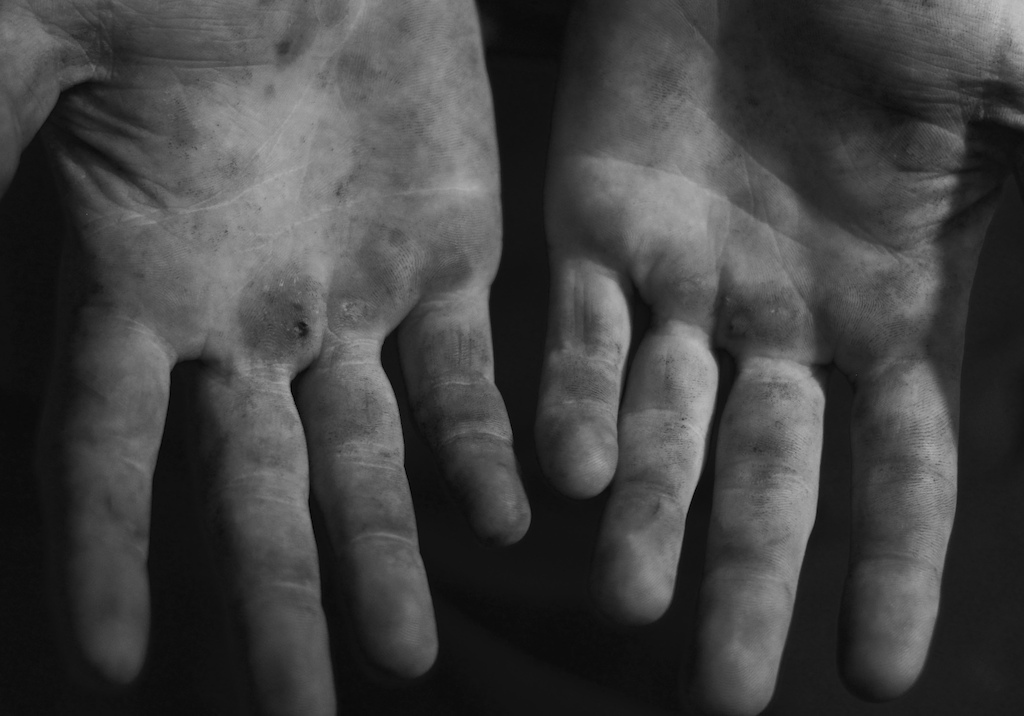
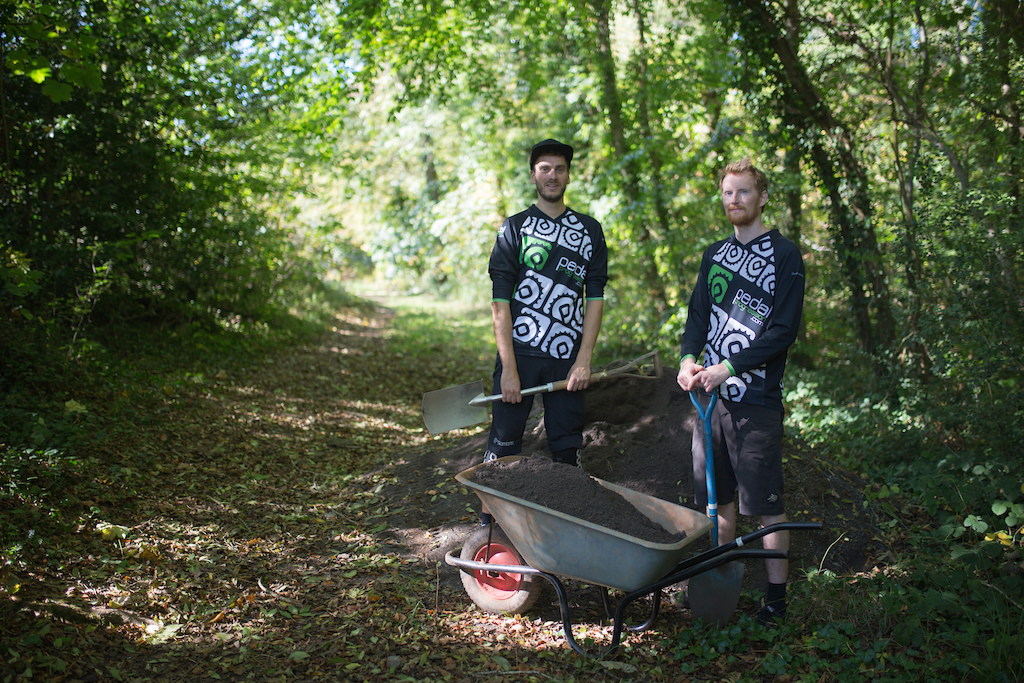
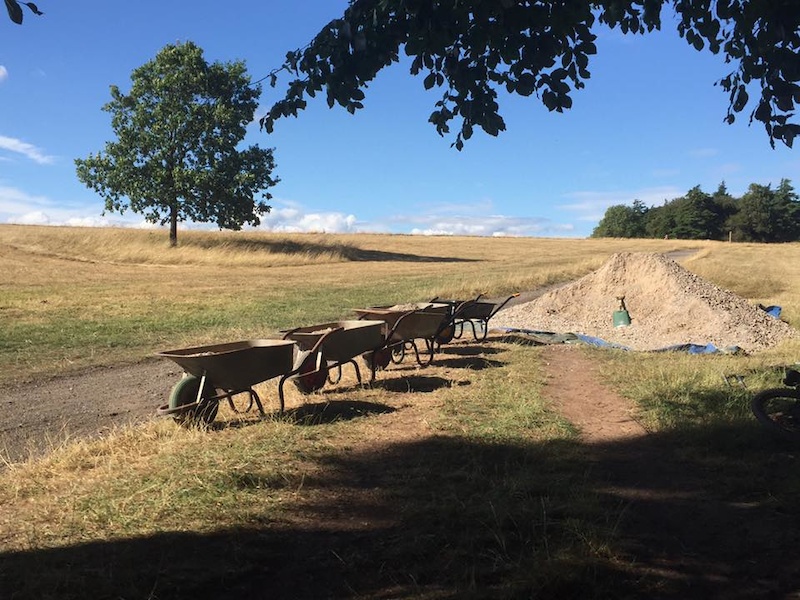





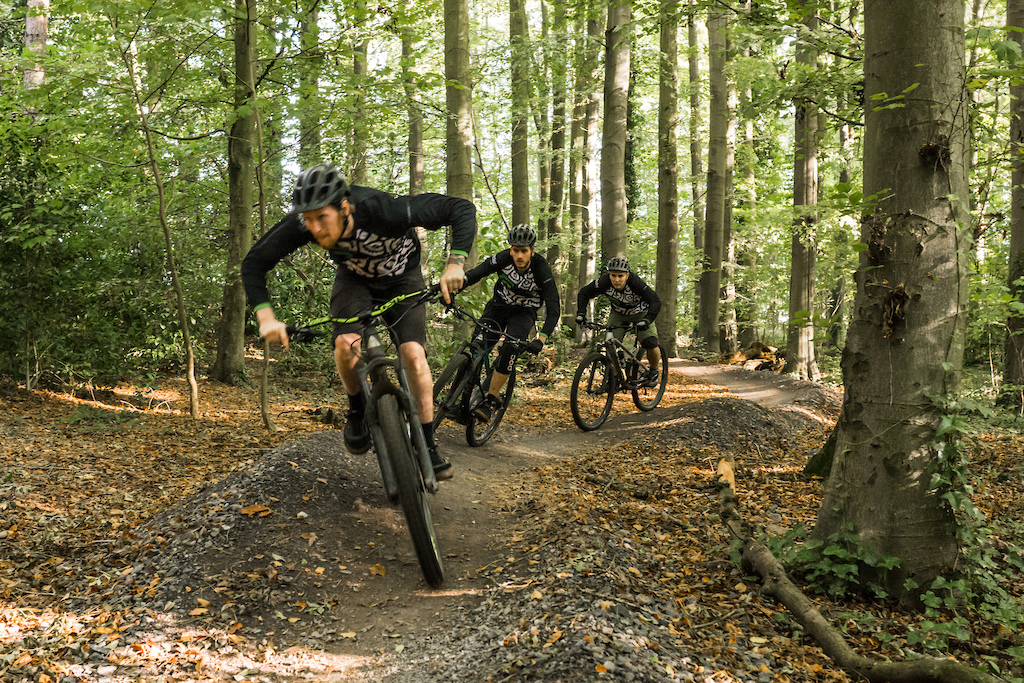


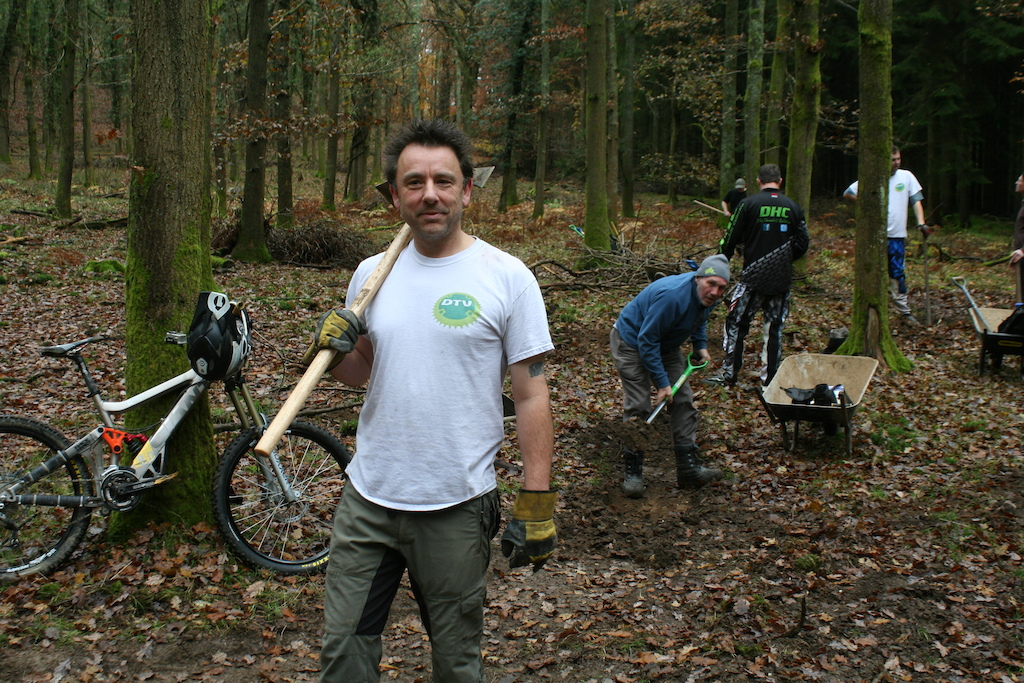







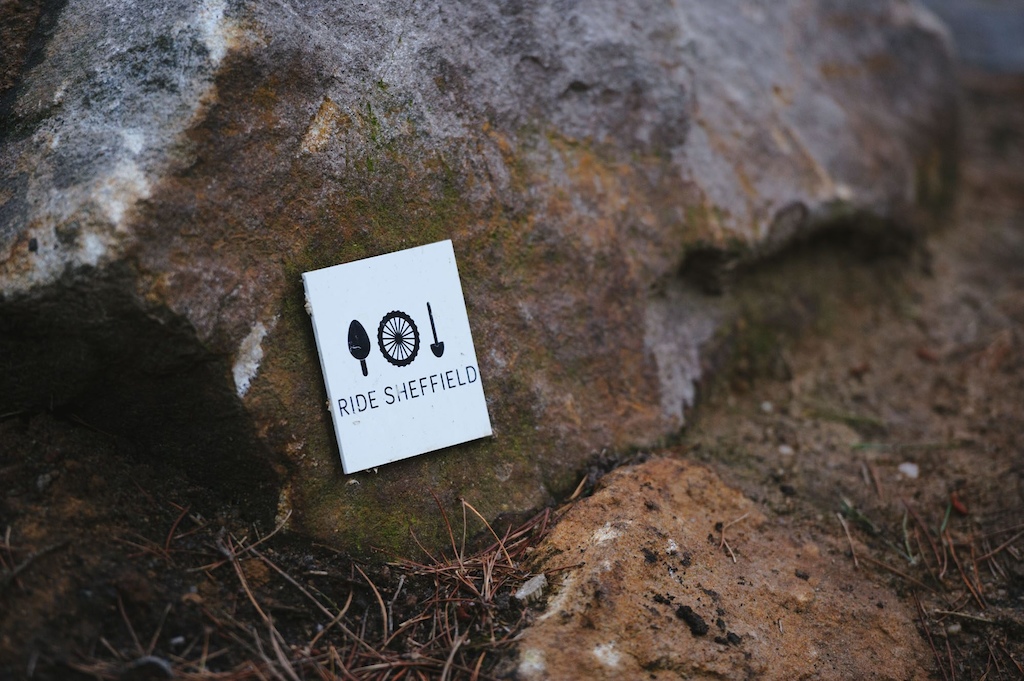






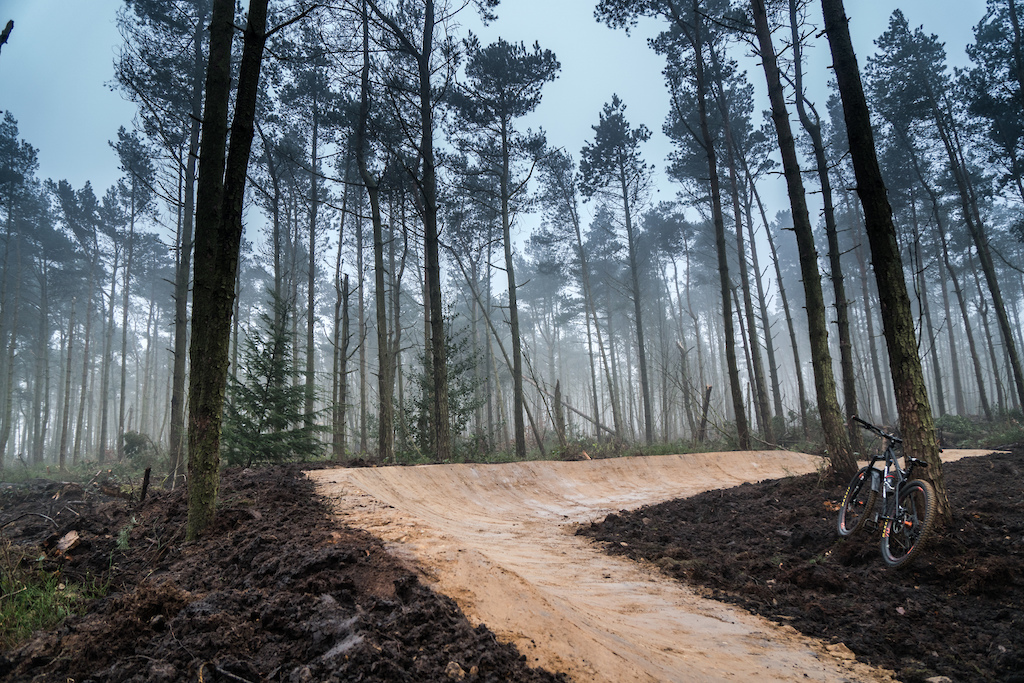

The DTV has to raise funds for any other work themselves...they've currently got a crowd funding page set up to raise money for a brand new DH track.
To date i've not got a ticket
Now there was another site within the city that couldn't have been more different. We were always welcomed and encouraged to come along on dig days. We were even provided tools whenever possible so that we didn't have to buy them ourselves, and this was a volunteer group! I just think it's important to say that some *public* trail builders seem to think they're building exclusively for themselves, and it makes the situation worse for everyone.
Trying to get them to turn up is a blood out of a stone situation
but
the Flip side of the coin is the same can be said for the FC, If they where able to show willing an dedicate to a more tech area or tech sections trail.. That 'could' attract more members to local trail building group (TIMBER).
Who are stuck in the middle, under manned and over worked, doing what they can to maintain miles and miles of trail.
Frustrating!
The whole thing is an uphill battle with people fighting for diffident causes and holding different views within the sport, which is part of the issue. I seen groups literally spend years working with the FC and National Park and only really manage to achieve a few hundred meters of new trails. Even after all this the trails are subsequently torn up when there is a change of management in the woods(see the farce that is Delamere forest management). Some people within these groups are very vocal against doing anything other than working with the authorities and see those who ride on footpaths or dig "illegal" stuff in woods as really bad for the sport. But at the same time if you look at the battles we have (see Cut Gate) going on just to maintain the status quo you cant blame people for getting hacked off and doing there own thing.
I dunno, I have been riding bikes off road for over 20 years now and usual cop some grief off some nob in hiking boots at least once a year for riding safely down legal trails in the Peaks. I am over playing by the rules anymore, if that makes me bad I aint really in the minority here (at least in the group of riders I know
The boom in mtb in the uk is partly due to trail centres. Riden by folks who have never picked up a spade in their life. It’s understandable if you are new to the sport and suddenly discovered trail centres litter the FC hills.
But for those who ride outside these areas regardless of there legally no just how much goes into building. It takes a lot longer than just an afternoon in the woods.
I would also point to the idea of community and the enjoyyof actually building. I’ve spent years building when I could have been riding. But for builders we genuinely enjoy building. There is no better feeling than getting to the last hurdle of shaping, taking time with every drag of the take. Envisioning how you’re going to ride it, how much speed you think you’ll be carrying, the flow, how the exit of the turn will lead into the next.
So I would say, you have the right attitude to pay at a trail centre but please stay away from local spots unless you’re invited
Take = rake
It's possibly not a very popular thing to say, but I have never put a spade in the ground or laid a single stone - and I have no intention of doing so.
The only "made" trails I ride are places I pay to ride (mostly DH bike parks like Revolution).
I don't particularly enjoy riding man made XC trails, I'm afraid I find them generally boring. I refer to places like Coed y Brenin as semi-offroad trails. It's not what I call mountain biking.
Natural trails in my native Peak District change over time and with the seasons, they're always unpredictable, require a decent bike and make proper use of things like tyre grip and suspension. There's no shortage of natural berms and kickers here. If I see man made berms I'd much rather try to get the back end to slide round the inside.
Anyway, I'm not saying the man made xc trails are the devil, just that there are alternatives
I now live in Catalunya and I am blessed with an infinite choice of incredible natural trails. Before this I used to live in Cambridge and Thetford was my “local” riding spot. So I entirely understand @nojzilla s rant and I infinetly thank him and his peers for building what at the time was my only riding spot!
Places like Mam Tor and Whinstone Lee Tor are so heavily populated by walkers that I don't ride there much as it doesn't seem fair - certainly not on the weekends. They've also had extensive flag stones put down (which has largely ruined Whinstone)
Devils Elbow is a prime example of natural maintenance done correctly. Before it was a slop fest at the bottom and almost impassable, now it's been 'maintained' the whole trail flows. If you are ever down that way you should check it out. PDMTB do a lot of work on lockerbrook too which is vastly improved with clearing of drains etc. I think a lot natural trails have more work done than you think to improve drainage situations
All of these are natural trails. All of these have needed/need a helping hand to keep them running. Chances are you've benefitted from their work, even if you don't recognise it. I don't think you have to dig by any means, but sticking some change in one of their tins next time you're in Cafe Adventure or the like goes a long way.
(And in terms of cheeky trails, WLT became a lot worse when idiots started riding les arcs in poor conditions, nearly took out a load of walkers, and generally made it shit).
"Natural trails are where mountain biking was born and cultivated. It's harder, but it's proper! "
For us, remove the man made element and its very much not harder. It's mind numblingly dull and much of it could be done on a gravel bike.
So much moaning. Show me how you manual rollers and fly doubles, preferably tripples on flow trails, because any idiot can get wobbled on rocks and roots and say it was harder.
100% natural. Good luck riding that on a CX bike
The fact you think there is a campaign to ruin it quite frankly shows you're totally ignorant on it all.
I almost never ride the man made stuff and not all the natural stuff does need help of course, but compare SOME of the natural stuff to what it was ten years ago and it IS eroded, it IS far wider than it used to be, and the Bog of Doom (with the exception of this year due to freak weather) gets worse every single year. Nowt wrong with making it passable without screwing up the moor further.
The interesting stuff comes from what's been built by mountain bikers, and I don't mean machine built flow trails, I mean stuff that's been hand built by people cheekily in the woods over the years.
If anyone is interested in purchasing their own custom built trail tool, please check out the link below!
www.pinkbike.com/buysell/2315935
youtu.be/QPI0uAsiJnw
"Cheeky trails" is the same as a "Cheeky Nandos", there is nothing cheeky about it, but it suggests that it isn't meant to be...
Plenty people have carried on building either in the same spot or elsewhere, but they have all had the balls to get involved and get building.